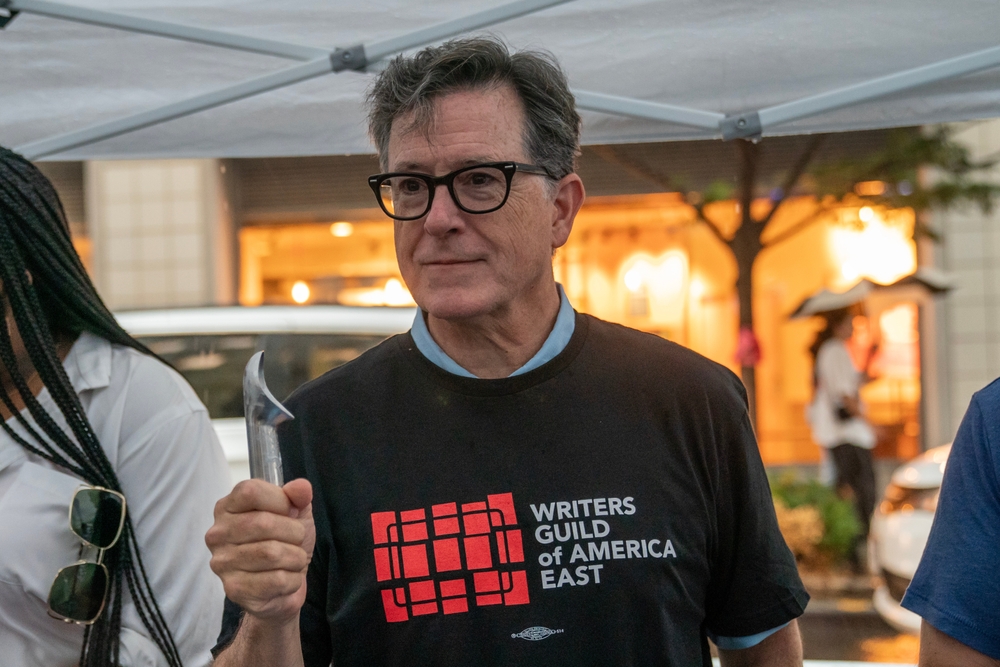What the 2025 Gala Teaches About Influence, Power, and the Modern CEO
Some parties are just parties. Others reveal how influence works today.
GQ’s Men of the Year celebration is an event built on that second principle. You see people like Stephen Colbert laughing on a terrace, or Hailey Bieber posing with a quiet ease that only comes from constant public life. Sydney Sweeney, Oscar Isaac, SZA and Seth Rogen all move through the room, each with a different kind of cultural gravity. The setting may look casual, but the mechanics behind it operate with the precision of a well-run business.
This isn’t about celebrity worship. It’s about something far more relevant to every CEO in the world:
How do leaders turn reputation, identity, and presence into long-term business value?
The answer explains why this event remains such a fixture of the cultural calendar, and why leaders—in entertainment, business, and technology—can learn a surprising amount from it.
The Real Purpose: A Masterclass in Influence Economics
A modern leader isn’t just evaluated by quarterly earnings or operational choices. Increasingly, the marketplace rewards something harder to quantify: impact on culture.
If a CEO builds a product that is useful but forgettable, the market may treat it as a commodity. But if a brand becomes culturally relevant—something people care about, aspire to, or identify with—it gains pricing power, resilience, and longevity.
This is the same dynamic that makes a room full of instantly recognisable faces so commercially powerful. Their presence signals something audiences understand intuitively:
“If these people are here, this matters.”
The economics are simple but profound:
-
Cultural attention creates commercial value
-
Commercial value attracts partners
-
Partners reinforce the cultural signal
-
The loop continues
The top leaders in business already know this. Influence is now part of the balance sheet, implied but measurable through brand strength, customer loyalty, and pricing elasticity.
Why the Event Works: The Power of Carefully Curated Alignment
Events like this don’t succeed by accident. They are structured the way strong companies structure product strategy: define the core audience, reinforce brand values, control how the world experiences the message.
Instead of quarterly filings or analyst calls, the room itself becomes the statement.
There are three business principles on display:
1. Not all visibility is equal
Anyone can generate attention.
What moves markets is the quality of attention.
When a brand surrounds itself with serious creative and cultural achievers, it signals standards—just as a luxury automaker signals excellence by partnering with world-renowned designers rather than generic influencers.
2. Status is a shared asset
A brand may start as the host, but influence flows in all directions.
Attendees lend reputation to the event; the event lends reputation back to attendees.
Executives understand this intuitively:
-
A high-performing hire improves a company’s perceived capability
-
A respected board member strengthens valuation multiples
-
A well-chosen business partnership reshapes market confidence
Brands work the same way.
3. Cultural positioning is a long game
Companies that worry only about the immediate press cycle eventually fade.
Those that invest in identity accumulate something competitors can’t easily copy: meaning.
Who Attends—and Why That Matters for Leadership Analysis
Look at the mix of people who show up: comedians, actors, musicians, producers. They’re not from the same industry, yet they share a common trait:
They shape the conversation more than they follow it.
That is exactly the skill modern CEOs need.
Business schools teach operational excellence.
Markets reward narrative excellence.
Great leaders today must:
-
read the temperature of changing public expectations
-
communicate what their work represents
-
align internal execution with external perception
This is not about ego; it’s about strategy.
A leader who fails to harness perception loses the narrative to competitors, regulators, or activists who tell the story for them.
Behind the Velvet Rope: The Financial Logic
Evenings like this have costs—venues, production, curation, logistics. But the economic model is straightforward:
-
premium partners underwrite the experience
-
the event deepens loyalty with top creators and tastemakers
-
the resulting stories, endorsements, and imagery travel far beyond the room
A boardroom might call that a brand investment with multi-cycle ROI.
And for leaders who manage businesses outside the entertainment world, there is a powerful lesson:
In mature markets, customer decisions are rarely rational.
They are emotional, identity-based, and culturally influenced.
Executives who understand this outperform those who assume that logical arguments win hearts and wallets.
What the Event Symbolises About Modern Business
Strip away the champagne and spotlights, and one idea sits underneath everything:
Success today is multi-dimensional.
Companies win not just by being excellent, but by being recognized as excellent.
This is true whether you’re:
-
a venture-backed startup asking the world to believe
-
a legacy company trying to stay contemporary
-
or a public CEO managing the expectations of the market, regulators, and the public
Influence is no longer a “soft factor.”
It is a strategic asset.
What Business Leaders Can Take Away
1. Cultural value compounds like financial capital
Handled consistently, reputation compounds.
Handled poorly, it erodes faster than balance sheets can recover from.
2. Presence is part of leadership
People don’t just follow results—they follow clarity, confidence, and identity.
3. Brand alignment should be intentional
Not every partnership, event, or spokesperson makes sense.
Great leaders curate carefully.
4. Narrative is competitive advantage
If you don’t define the meaning of your business, others will.
Additional Insight for Readers
What is the business significance of the Men of the Year event?
It demonstrates how cultural influence, symbolic recognition, and association with high-impact individuals can reinforce brand identity and create long-term commercial value.
Who is the GQ Man of the Year 2025 winner?
GQ does not choose a single “Man of the Year” winner. Instead, it honors a group of influential figures through its Men of the Year list. In 2025, honorees included cultural leaders such as Stephen Colbert, SZA, Seth Rogen, Hailey Bieber, Sydney Sweeney, and Clipse—all recognised for their impact across entertainment and societal conversations.
What is the meaning of GQ Men of the Year?
The GQ Men of the Year event celebrates individuals (not exclusively men) whose influence spans culture, innovation, and style. It’s a way to recognise people who have shaped the global conversation in a meaningful way, and for GQ to align itself with leaders who reflect its brand values of sophistication, creativity, and relevance.
A Forward-Looking Thought
You could remove the red carpet entirely and the lesson would stay the same:
A leader who controls the meaning of their work controls the market.
A brand that speaks to culture—not just to customers—will always be stronger than one that merely exists.














